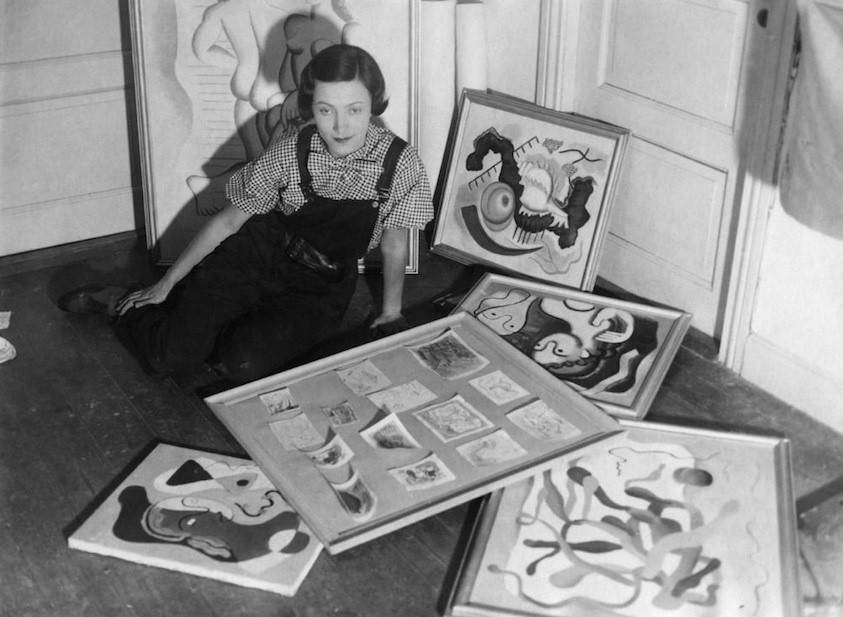10 Women Surrealists Who Redefined Creativity, Art and Reality

Surrealism, a movement born from the subconscious mind, emerged from the creative surge of French poet André Breton's Surrealist Manifesto in 1924. Initially dominated by men, women soon infiltrated the movement, drawn to its revolutionary ideas and freedom from rational constraint. Women artists began to interpret dreams, fuse the familiar with the unknown, and break free from societal expectations, making their mark in Surrealist circles through exhibitions and solo shows. Here, we explore ten significant women who contributed to this movement, each with her unique relationship to Surrealism.
1. Meret Oppenheim

Swiss artist Meret Oppenheim became renowned for her whimsical and bizarre sculptures. Her most famous work, Object (1936), a fur-lined teacup, saucer, and spoon, epitomizes the Surrealist knack for making the improbable tangible. Oppenheim's creativity flourished in the 1930s Paris Surrealist circle, where she mingled with artists like Man Ray and Max Ernst. Despite her association with Surrealism, she maintained an independent spirit, once stating, "I always did what I wanted and was discovered by them by chance."
2. Dora Maar
French photographer Dora Maar's intriguing works often fused strangeness with beauty. Her photograph Père Ubu (1936) exemplifies this blend, depicting an unidentified creature that some believe to be an armadillo fetus. Maar was deeply embedded in the Surrealist movement, collaborating with artists like Man Ray and Picasso, the latter becoming her lover and muse. Her experimental commercial photography incorporated techniques like double exposure and photomontage, seamlessly blending reality with artifice.
3. Eileen Agar
Argentine-British artist Eileen Agar was known for her imaginative collages. Her studio brimming with "fantastic bric-a-brac," Agar created works like Angel of Anarchy (1936-40), a plaster head adorned with fur, feathers, and gemstones. Though hesitant to be labeled solely a Surrealist due to her love for Cubism and abstraction, she exhibited alongside Surrealists in the 1936 International Surrealist Exhibition in London.
4. Leonor Fini
Leonor Fini, an Argentine-Italian painter, was drawn to metamorphosis and ambiguity. She often depicted human-animal hybrids. Her painting The Shepherdess of the Sphinxes (1941) features a surreal combination of women and lions. Despite her participation in major Surrealist exhibitions, Fini distanced herself from the movement due to her disdain for Breton's misogyny and anti-homosexual attitudes, asserting her independence in both her art and personal life.
5. Dorothea Tanning
American-born Dorothea Tanning was a painter, sculptor, and poet who embraced Surrealism during World War II. Her self-portrait Birthday (1942) marked her entry into the Surrealist sphere, catching the eye of Max Ernst, with whom she would later have a long romantic and artistic partnership. Tanning's work often explored the illogical and impossible, with themes like the femme-enfant and chess, exemplified in Endgame (1944).
6. Rita Kernn-Larsen

Danish painter Rita Kernn-Larsen was active in the international Surrealist movement in the 1930s. Her works, rich with dreamlike imagery, gained recognition through Copenhagen, Oslo, and London exhibitions. Peggy Guggenheim showcased her in a solo exhibition 1938, solidifying her place in Surrealism. Post-World War II, Kernn-Larsen shifted towards abstraction, experimenting with ceramics and collage.
7. Ithell Colquhoun
British artist and occultist Ithell Colquhoun briefly engaged with Surrealism in the 1930s, adopting automatism before departing to focus on the occult. Her painting Scylla (1938) embodies Surrealist ambiguity, depicting rock formations that could be interpreted as human anatomy. Despite severing formal ties with the British Surrealists, Colquhoun felt like a Surrealist throughout her life.
8. Remedios Varo
Spanish-born Remedios Varo created intimate, imaginative paintings portraying an alternate reality. Her works, marked by meticulous detail and interconnected figures, joined the Surrealist circle in Paris in 1937. Varo's art is planned meticulously, rather than relying on chance, and it reflects her affinity with Surrealist themes while maintaining her distinct, idiosyncratic style.
9. Kay Sage
American-born artist Kay Sage used landscapes as visual metaphors for states of mind and spirit in neutral-toned panoramas reminiscent of Giorgio de Chirico. Known mostly as a painter, though she was also a published poet, Sage spent her early career in Italy and France. Her landscapes are usually bare and represent space inspired more by imagination than by nature, populated with unfinished buildings. In Tomorrow Is Never (1955), towering scaffolds emerge from nebulous clouds and surround indiscernible draped structures.
10. Lee Miller
American-born photographer Lee Miller began her career in front of the camera as a Vogue model. Within a decade, she took her first self-portrait (published in Vogue's September 1930 issue), which foreshadowed the ways this inventive photographer would bring her eye for the unexpected to the black-and-white frame. One of the photographers she posed for at Vogue was Edward Steichen, who suggested she study with Man Ray.
These pioneering women of Surrealism navigated the movement uniquely, contributing significantly to its legacy. Their diverse experiences and artistic expressions underscore the richness of Surrealism, transcending conventional boundaries and celebrating the power of the imagination.













